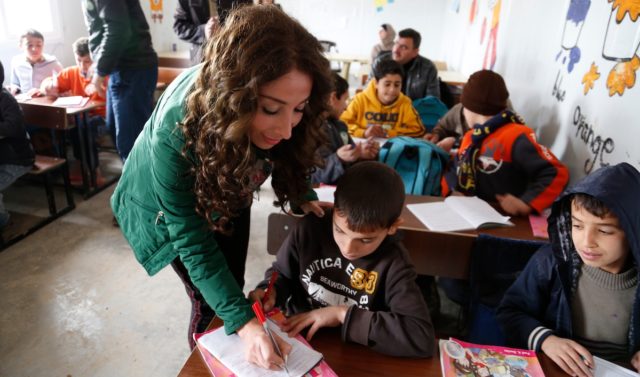
In January, the veteran Oklahoma educator and activist Joyce Henderson wrote an editorial in The Oklahoman in which she reflected on her participation in the civil rights movement and offered a path toward further justice and equity today.
The editorial hit me doubly hard because Henderson was the first principal I worked with when I started teaching, at Star Spencer High School in 1993. She was a valuable mentor to me, as she has been to generations of students, educators and fellow citizens.
As principal, Ms. Henderson taught us: “The community doesn’t care how much you know until they know how much you care.”
In many ways, Ms. Henderson personified what is now called “social-emotional learning,” though we didn’t have that name for it at the time. Social-emotional learning seeks to build empathetic bonds so educators can help students manage emotions, reach positive goals, build trusting relationships, develop self-control and make responsible decisions.
It’s an approach that has recently come under attack from those who inexplicably believe that schools should focus solely on teaching “facts.” It seems to be a result of an extreme distrust of educators. In fact, a bill filed by Sen. Shane Jett (R-Shawnee) this legislative session seeks to ban social-emotional learning from Oklahoma public schools.
To see why this effort is misguided, we need only look at the example of Ms. Henderson’s life and career, which can provide valuable lessons for today’s troubled times.
Creating community
Ms. Henderson has led a fascinating life. As a little girl in the 1950s, she was one of the first students led by the late Clara Luper during the Oklahoma City sit-in movement, the nation’s first, long-lasting sit-in. When she was 16, she went to Washington for Martin Luther King Jr.’s March on Washington, where she heard King deliver his “I have a dream” speech.
“The mission in the 1960s was to fight for equality for all people regardless of race, creed or color,” Henderson, now 75, wrote in The Oklahoman. “Today, we continue to fight for that equality.”
Ms. Henderson brought this commitment to her work as an educator, which she took very seriously but approached with a sense of unfailing humor.
Sometimes I used to goad her by introducing her as “my first principal” — not mentioning that I was a 39-year-old rookie teacher, not a former student. She would smile and protest, saying I made her feel “so old.” If I pushed the gag further, I might earn a swat with a rolled-up magazine.
One thing that made Ms. Henderson an excellent educator was her ability to establish a personal connection with both staff and students.
During the peak of the crack and gangs era, Ms. Henderson made a point of promoting empathetically positive behavior.
During every passing period, she would stand on a step ladder in the hall, exhorting an orderly and on-time passage to the next class. It was not an authoritarian posture, however, and the students knew it. Without breaking stride, they would pull up next to her, exchange loving words, and head to class. The result was that Star Spencer had the best school culture, and the strongest bonds with the community, of any school I have seen.
She also took out her step ladder to direct crowds at football games, where not every fan in the full stadium had been socialized into our school’s culture of remaining positive and nonviolent.
More than any other principal I have ever known, Ms. Henderson reached out to the community, inviting patrons to evening meals and conversations at school and recruiting parents, who were the key to keeping the crowds under control. From her step ladder, she would direct volunteers to one hot spot after another to defuse possible fights when tensions escalated.
One night, after a game where people had seemed particularly on edge and prone to conflagrations, Ms. Henderson bounced off her ladder and told me, “I’m going to break the rules.” She then gave me an embrace that I will never forget.
The path ahead
Driving home that night, thinking about all of the crises we were balancing in our community — between drugs and gang violence and the collapse of blue-collar jobs — it seemed like we could be approaching the end of the world. But, as I was thinking these dark thoughts, I saw lights shining from a building at the top of a hill, and something about those lights gave me a glimmer of hope that we would succeed.
It was the Murrah Building.
The irony of that moment brings me back to the dual messages of Ms. Henderson.
On one hand, as she pointed out in The Oklahoman, we are still dealing with the same issues we have been struggling with for years: “voting rights, jobs, education, housing, etc.”
On the other hand, as educators, the tools we have to help change things for the next generation are always improving. One of these tools is social-emotional education, which, despite what its opponents argue, does not distract from learning. Rather, it enables learning by treating students as whole people and members of a community.
In my view, incorporating social-emotional learning is the greatest accomplishment of Oklahoma City schools in recent decades.
But it is also not a new approach. It is something that talented educators like Ms. Henderson have been doing intuitively for many years.






















